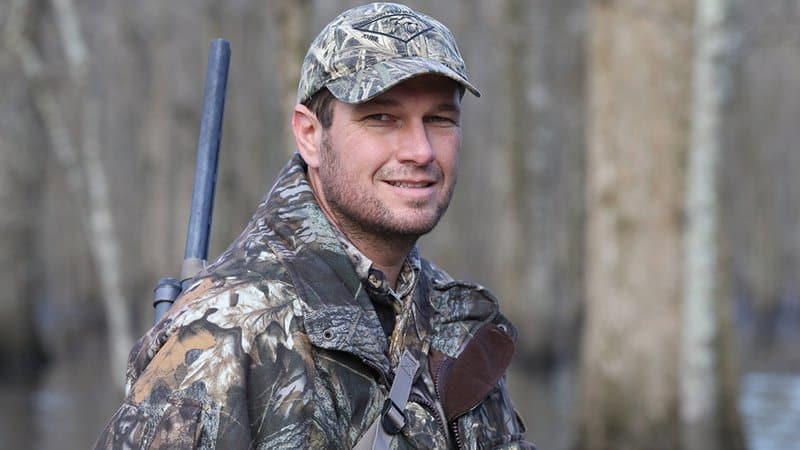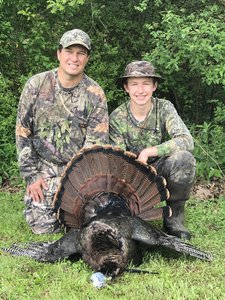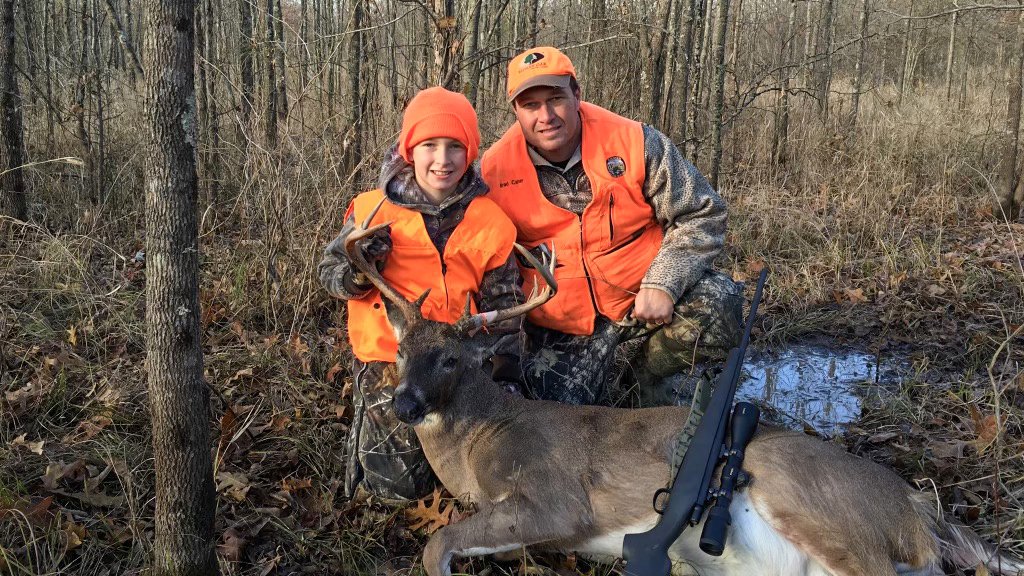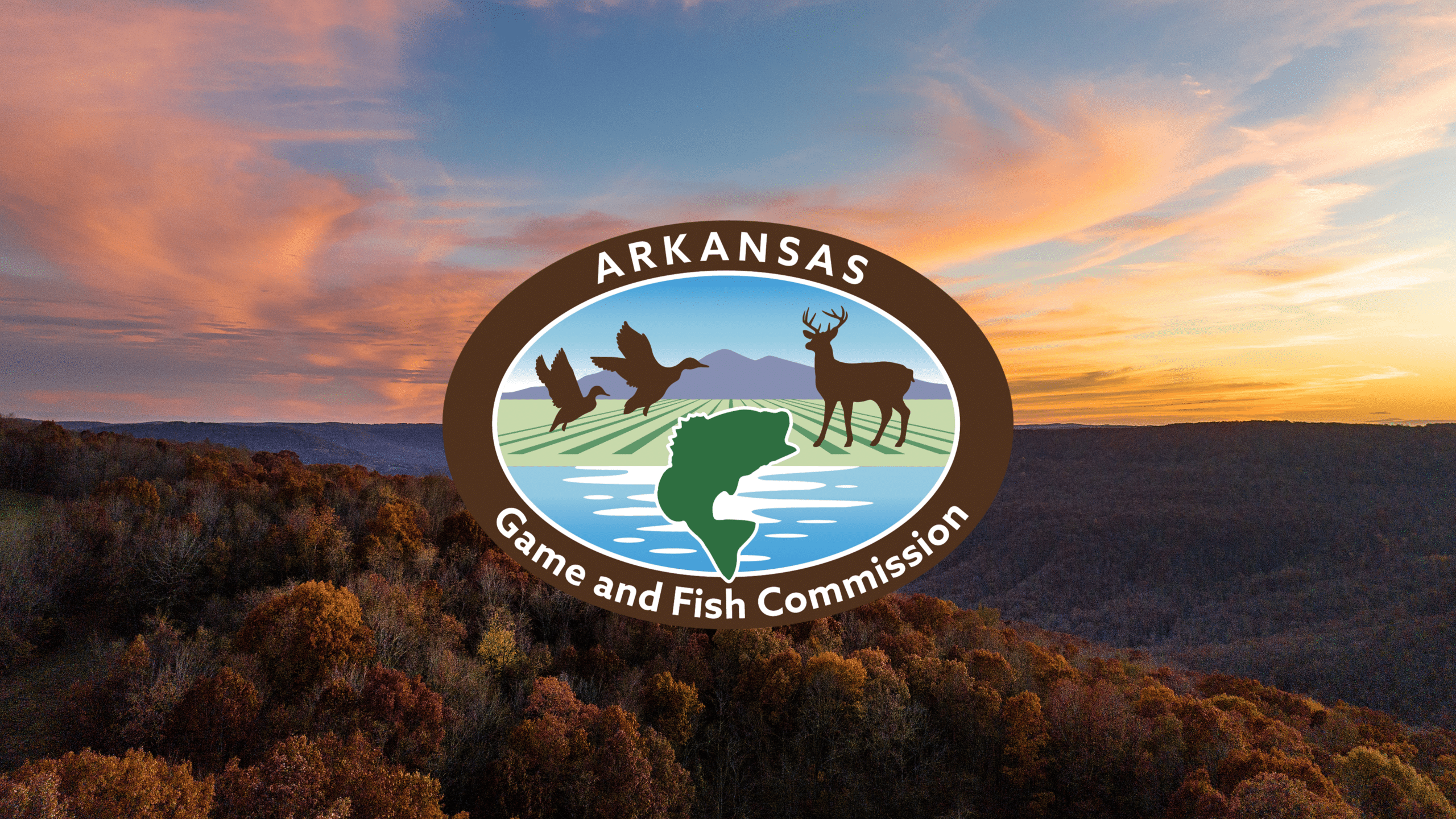New Deputy Director Carner has Arkansas outdoors in his blood
BY Jim Harris
ON 07-06-2022

July 6, 2022
Jim Harris
Managing Editor Arkansas Wildlife Magazine
LITTLE ROCK – Working throughout the Arkansas Game and Fish Commission are people in various divisions whose youthful experiences pointed them in the direction of a work life with an outdoors conservation agency. Brad Carner, whose family in Lake City (Craighead County) on the St. Francis River was immersed in hunting, trapping, and fishing and whose hunting exploits were experienced on public lands, is one such agency employee.
The 23 years he’s spent in a variety of positions at the AGFC, in turn, has prepared him for the latest step: his recent promotion to deputy director. Before the latest move, Carner was days shy from celebrating his ninth year as chief of the AGFC’s Wildlife Management Division.
“That had always been in the back of my mind at some point in my career, that I would consider or would be interested in more of an administrative role,” Carner said. “Really, the opportunities right now are exciting, whether that’s potential increases in funding through things like Recovering America’s Wildlife Act and all the work we have going on with greentree reservoir restoration and just the opportunities that are in front of our agency, a new strategic plan coming and all of that. it’s exciting to think about playing a bigger role in moving conservation forward.”
Under AGFC Director Austin Booth, the administrative level at the AGFC has the makeup of varied experiences, with deputy directors coming from different agency departments. Chief of Staff Chris Racey and newly appointed Deputy Director Ben Batten both were at one time head of the Fisheries Division, while recent Deputy Director appointee Spencer Griffith came from communications and marketing. Carner believes he’s part of a solid team that is facing major agency challenges, from battling invasive plant and animal species, to chronic wasting disease in some of the deer population, to catching up with expensive statewide agency infrastructure needs.
“You have to have a proactive, adaptive approach to face those effectively and I think we’re prepared to do that,” Carner said.
“We have a strong team in place right now and it is strong because of those differing perspectives and backgrounds.Your team is stronger if you have differing experiences and backgrounds, and I think that’s true here. And the willingness to take a fresh look and not fall into the mindset of you do something because that’s the way we’ve always done it. I think the team that’s in place now is certainly wanting to take a fresh look at the challenges we are facing.”
Carner says he grew up “right on the bank of the St. Francis River” in Lake City. His family even lived on Catfish Drive, though that name was an homage to the Lake City school mascot as much as it referred to the regular produce being commercially fished out of the river by his family and others. He recalled learning to catch and clean fish and trap wild game in his childhood. “That’s all I’ve ever known is being outdoors and taking part in all that our state has to offer,” he said.
Carner earned both bachelor’s and master’s degrees at Arkansas State University in Jonesboro, and while in graduate school in 1998 he was hired as an extra labor technician for the AGFC at Shirey Bay Rainey Brake Wildlife Management Area.
“I have had the good fortune of working in eight positions in the Wildlife Division,” he said. His experiences ranged from being a private lands biologist based in Camden, to the agency’s turkey and quail coordinator – Carner’s graduate research was on turkeys – to regional supervisor in Russellville before being called to Little Rock as assistant chief over Wildlife’s program section.
“That diversity of experience, working literally in all parts of the state, I’ve developed an even greater appreciation for what a diversity of natural resources we have,” he said. “I come from the standpoint of, I’m just like the average Arkansan out there that enjoys hunting and fishing on our public lands and public waters. That’s all I’ve ever known and still today that’s where I spend most of my time with my son enjoying the public resources of the state.”
Years ago around the agency, Carner would have been known for his excitement over an approaching turkey season, but lately his 16-year-old son, who is an avid hunter and angler, has given Carner a renewed interest for duck hunting, he said.
“Because of that I’d have to say that’s my favorite season now because it’s an opportunity to be with him,” Carner said. His favorite public land to hunt – it’s a tough choice, Carner admits – is still near his home, St. Francis Sunken Lands WMA.
Carner has served on the wildlife resources committee of the Southeastern Association of Fish and Wildlife Agencies while AGFC Wildlife chief. In that role he has served as a liaison between all the Southeastern wild turkey program coordinators – the AGFC’s turkey program coordinator, Jeremy Wood, is chairman of that group. He’s this year’s chairman of the Mississippi Flyway Council and will work with Luke Naylor, AGFC chief of wildlife management, to transition those responsibilities to him over the next year.
He also worked for the past six years on the Mississippi Flyway Council’s Arctic Goose Joint Venture Management Board, working with biologists and others from all across North America, and it has taken him to Canada and the upper U.S. to see wetlands and waterfowl management practices.
“We actually had the opportunity to host that group here in Arkansas, probably around 2018-2019, and to see folks that have spent their entire careers around waterfowl and waterfowl management, and to take them to Halowell Reservoir one evening and to see their response and reaction that, you know, we have something special here,” he said. “Even folks that have spent a career working on waterfowl, they agree and they were openly saying, we have a special spot in the world from a waterfowl perspective, for sure.”
Carner is most proud, he says, of the significant additions to available public land in Arkansas during his nine years as chief, ranging from the creation of Jack Mountain WMA under a long-term lease agreement to large acquisitions at Frog Bayou and Cypress Bayou WMAs, to name a few.
“I’ve not totaled up the lands recently but I know we’re well over 10,000 acres but probably more like 15,000 acres of AGFC-owned land that has been added during my time as chief and that is something that will forever be there, right? For Arkansans and others to enjoy. That’s something that stands out to me,” he said.
The way habitat management of WMAs has evolved and “been taken to a whole new level” in the past nine years, he said, has been a source of pride. Use of prescribed fire and the improved conditions of such WMAs as Harold Alexander and Gene Rush stand out, he said. The way his staff has attacked the challenges of the health of the state’s bottomland hardwood forest has been rewarding, he said.
“That progress is not something that you see day to day to day, but then you look back over time and we have made huge strides in our GTR restoration initiative and in our being to the point now of starting to implement changes in water management, changes in infrastructure. Our forest management efforts are really ramping up.” Carner displayed a mild-mannered leadership style around his division. He says his biggest influence in running the Wildlife Management Division came from his predecessor, Doyle Shook.
“Doyle had spent a large part of his career as assistant chief and had viewed all the workings of the Wildlife Division at that time and had a good perspective of all facets of the division,” Carner recalled. “But when he became chief, and I was serving under him as assistant chief, I really learned a lot from Doyle. Things that were important to him were strategic planning and in linking our work within the Wildlife Division to other, larger conservation efforts.
“It was a thinking that what we’re doing here has a larger role to play than just our little acre that we may be working on at that time, such as links to the North American Waterfowl Management Plan and other regional and national conservation plans. I learned a lot from Doyle in the time that I served under him and I would say he was one of those that had a larger impact on me and my career probably more than he even realizes.”
Carner considers his style as being more of a “servant leader.”
“I want to be out with folks and be alongside them, not necessarily out in front of them,” he said. “We have a staff at the Game and Fish Commission that’s the most committed and dedicated people that you will ever meet anywhere. It’s really about providing support, looking for ways that we can remove barriers and obstacles that might hinder them from getting their work done, and providing a little bit of direction. Part of being a leader is making sure everyone is moving in a unified manner in the same direction.”
Recent News

AGFC Commissioner Meeting Notice
Apr. 16, 2024
Subscribe to Our Weekly Newsletter E-mails
Don’t miss another issue. Sign up now to receive the AGFC Wildlife Weekly Newsletter in your mailbox every Wednesday afternoon (Waterfowl Reports are published weekly during waterfowl season and periodically outside the season). Fishing Reports arrive on Thursdays. Fill in the following fields and hit submit. Thanks, and welcome!

